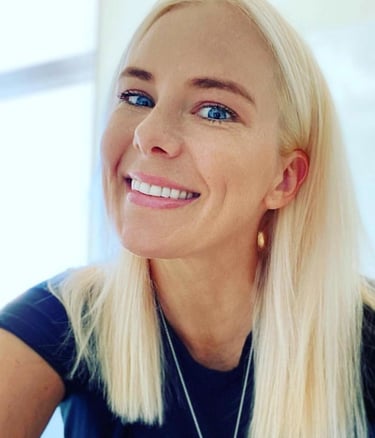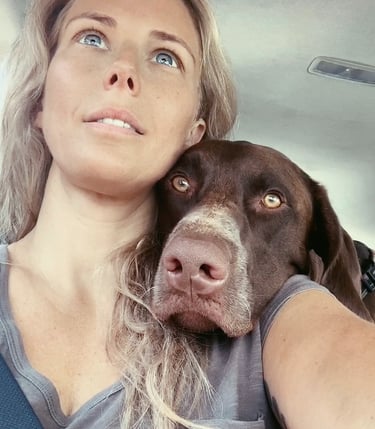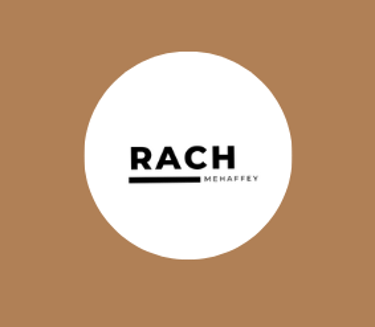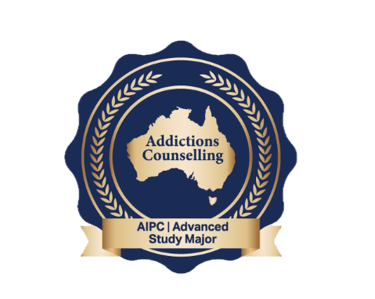Understanding Cognitive Biases: How They Impact Decisions and How to Overcome Them
MINDSET
Written by Rachel Mehaffey


You are biased - we all are & here is why
Look we all do it, take shortcuts where we can to make life simpler, easier or faster. We do it consciously but the complex part is our brains often take shortcuts for us without us approving the process.
We operate, in simplistic terms either consciously or un(sub)consciously. When we are not included in the decision making process of the brain this is a default or subconscious behaviour. While these shortcuts, known as cognitive biases, can sometimes be helpful, they often lead us astray. Understanding these biases can help you make better decisions and improve your overall mindset by making yourself an active participant in your own choices in life! It is ironic our brains can do it for us when we are the ones in the drivers seat!
There are 20 common cognitive biases understood in psychology and the study of human behaviour and the mind. Let's dive in and explore the science behind them, and discover ways to overcome them.
Let's explore the most common biases by looking at an example for each, the science behind how and why it happens and some little tips on trying to overcome them.
1. Anchoring Bias
Example: In salary negotiations, the first offer made sets the standard for the negotiation.
Science: Our brains latch onto the initial piece of information as a reference point, which affects subsequent judgments. This is known as the anchoring effect.
Why We Do This: It simplifies complex decisions by providing a starting point, but it can skew our judgment.
Improvement Tip: Be aware of the initial anchor and actively seek additional information to form a more balanced view. When negotiating, prepare counter-anchors to shift the focus.
I think this one specifically when looking at the example backs up why so many women i know don't ask for pay parity or what they are worth in the workplace. Times have changed but the bias remains we are not worth the same money. There is no fact to drive the lesser value it is a bias held over from a time there was a reason to put it into place, now long gone and no longer serving.
2. Availability Heuristic
Example: After hearing about a high-profile plane crash, you might feel anxious about flying, despite the fact more people die crossing the road than ever will from a plane crash and the safety of flying is very comforting.
Science: The availability heuristic occurs when people overestimate the likelihood of events based on their memory of them. Vivid or recent memories come to mind more easily and influence our perceptions.
Why We Do This: It helps us make quick decisions based on immediate examples, which can sometimes be misleading.
Improvement Tip: Challenge your initial reactions by looking at statistical data and broader evidence to get a more accurate picture. Check the facts, grab the data and reach a little deeper than the knee jerk reaction based on observation and stored information.
3. Bandwagon Effect
Example: Joining a popular diet trend because everyone around you is doing it.
Science: The bandwagon effect happens when people do something primarily because others are doing it, regardless of their own beliefs. This is driven by social proof and the desire to conform.
Why We Do This: We seek social acceptance and avoid conflict by aligning with group behavior.
Improvement Tip: Reflect on whether your choices truly align with your personal values and needs. Consider the long-term consequences of following the crowd and the overall fulfilment of not living your own truth.
We have all heard the term 'jumping on the bandwagon' so it is not a new default behaviour but it is one that robs one of their individuality and can lead to a lot of resentment.
4. Blind-Spot Bias
Example: Noticing your friend's bias in their arguments but being oblivious to your own.
Science: Blind-spot bias is our tendency to recognise bias in others while failing to see it in ourselves. This happens because our introspection is less critical compared to our observation of others.
Why We Do This: It preserves our self-esteem and cognitive dissonance. Let's us latch onto the story we are telling ourselves and help us save face when the alternative of looking on the inside is not an inviting prospect.
Improvement Tip: Regularly seek feedback from trusted friends or mentors and engage in self-reflection practices to uncover your own biases. Realise it is ok to not be perfect, to be wrong in a conversation and to be able to say ' i don't actually think I like how I acted there' rather than disliking someone for something we are doing in return.
They say we often have an issue with someone or an action of another person because it is reflecting something we don't like about ourselves. Funny how we are blind to our own shortfalls but our minds are quick to observe the behaviour in others to point it out! Being aware of where you are triggered is a great start to overcoming and working with this bias to help grow.
5. Choice-Supportive Bias
Example: After choosing a romantic partner, you might overlook their flaws and amplify their positive traits.
Science: Once we've made a decision, choice-supportive bias makes us recall the positives over the negatives of our choice to reduce cognitive dissonance.
Why We Do This: It helps us feel more confident and less regretful about our decisions.
Improvement Tip: Stay open to reevaluating your decisions and be mindful of their downsides. Balance your view by seeking honest answers from yourself. Be aware no on is perfect but rose tinted glasses have to come off sooner or later.
This one is in my back pocket firmly. I have put many a partner on a pedestal thanks for Choice Supportive Bias. it is like the cheerleader in my head going off to keep supporting a team that is not even showing up for practice. We have to see the wood for the trees and not be afraid to acknowledge things move and change and so do people. love does not change anyone or anything but it can pull the wool over your eyes.
6. Clustering Illusion
Example: Believing that a series of good outcomes means you're 'on a roll.'
Science: The clustering illusion occurs when we see patterns in random sequences of data. Our brains are wired to detect patterns to make sense of the world, even when none exist.
Why We Do This: It provides a sense of control and predictability.
Improvement Tip: Recognise the randomness in events and rely on statistical reasoning rather than perceived patterns.
That is not to say the world has no forms of coincidence or higher meaning but when you attach to this bias in situations like gambling you risk your financial security on the luck of the draw. There is method in madness but before you bet your paycheck in the hope of rolling the bank have a little look into the formation of the numbers.
7. Confirmation Bias
Example: Only paying attention to news that aligns with your political views.
Science: Confirmation bias is our tendency to search for, interpret, and remember information in a way that confirms our preconceptions.
Why We Do This: It simplifies our information processing and reinforces our existing beliefs.
Improvement Tip: Actively seek out and consider opposing viewpoints. Engage in debates with an open mind to broaden your perspective and don't just read the part of the text message you want to see!
This one feeds into so many friends and clients lives. Mostly I see it with relationships probably because i have been there countless times myself! Ignoring the 'I don't think this is working' for the sign off of a 'x' or hearing the part where they said 'i did feel something' after they have spent an hour talking about how it was caring not love. Surely if they felt something it was love, right? Nope thats taking the word felt and ignoring what is actually being said.
8. Conservatism Bias
Example: Clinging to traditional methods at work despite new and more efficient technologies.
Science: Conservatism bias is the tendency to insufficiently revise one's belief when presented with new evidence.
Why We Do This: It provides stability and reduces the mental effort needed to change deeply held beliefs.
Improvement Tip: Stay informed about new developments and be willing to adjust your beliefs. Embrace change as a pathway to growth.
Oh this one is so common in the workplace I had to use the example. An old dinosaur I worked with in my last job was so rigid in his old ways he held the business back, created a lot of friction holding on and in the end was seen as a bully due to his fear of change and inability for his mindset to see tech and the recruitment world had moved on (like 10 years beyond his vision). You have to adapt or be left behind and this bias is largely what holds people in place.
9. Information Bias
Example: Continuously gathering data before making a decision, believing more information will always lead to better outcomes.
Science: Information bias is the tendency to seek more information than needed. While more data can be helpful, it often leads to analysis paralysis.
Why We Do This: It gives a false sense of control, certainty and protects us from our fear of change.
Improvement Tip: Identify the key information necessary for your decision and act on it. Set clear criteria for what information is truly relevant and don't go down a rabbit hole!
With so many schools of thought and differing views we can gather so much data and knowledge we end up being both the for and against side of our own debate team! We can lose what we were really looking to find if we clutter what it is we are looking for. The information bias is a rife one with so much knowledge at our fingertips. I find it easiest if I make a decision on what I want to do then use information to confirm the decision and which way to pursue it is proven the best form of action. Rather than will I or wont I. This afflicts a lot of people I know with the Risk Adverse trait in their personality or those afraid of failure. It is easy to build a wall of why not with too much information.
10. Ostrich Effect
Example: Avoiding checking your bank account after a series of big expenditures to escape anxiety.
Science: The ostrich effect refers to ignoring risky or negative information by metaphorically burying one's head in the sand.
Why We Do This: Avoidance reduces immediate anxiety and stress.
Improvement Tip: Confront issues head-on by regularly reviewing important information, such as financial statements, and taking proactive steps to manage risks.
Sounds easy right? We have all been there though. A few expensive dinners out, some new jeans to add to the pile of 10 you already have. The new shoes your daughter wanted when you know it went over the budget. If you don't look at the statement it didn't happen, right? My advice on this one is with all things in life, little and often. Even the bad and scary stuff is not as overbearing if it is bit by bit and along the way.
11. Outcome Bias
Example: Agreeing to life coach your partner when you know you are invested in the outcome!
Science: Outcome bias is the tendency to judge a decision based on its outcome rather than the quality of the decision at the time it was made.
Why We Do This: Successful outcomes reinforce our decisions and boost confidence.
Improvement Tip: Evaluate the decision-making process itself, considering the information and context available at the time, rather than just the result.
This is why I don't formally coach any of my friends or family. If I am part of your life and I care about you then I have a vested interest in the outcome. You should leave him, because I want you to be happy (i've found myself thinking talking to a friend) when really he had perfectly valid reasons for being a little put out by what you did. Being impartial to decisions when you feel strongly for a desired outcome is the only way I have found to (try) and avoid making poor decisions based on what I WANT not what is likely to happen.
12. Overconfidence
Example: Overestimating your ability to complete a project on time without considering potential obstacles.
Science: Overconfidence bias makes us believe our abilities are better than they actually are, which can lead to risky behavior.
Why We Do This: It enhances self-esteem and motivates us to take on challenges.
Improvement Tip: Regularly assess your skills and seek honest feedback. Set realistic goals and account for potential setbacks.
My dad was a 10 times ironman before he passed away of lymphatic cancer. I know his planning always had to be spot on in terms of training, nutrition and rest but when he was sick he refused to give his body the break it needed and showing up to compete one year was thwarted because he overestimated his bodies capacity to regenerate after a treatment. He refused to fathom he would be unable to do it on the day and instead of maybe a finishing time he was not happy with he was completely knocked out of the race. We have to make allowances for external factors and our own capabilities.
13. Placebo Effect
Example: Feeling a reduction in pain after taking a sugar pill you believe to be real medication.
Science: The placebo effect occurs when a person experiences a perceived improvement in condition due to their expectations, even if the treatment is inactive.
Why We Do This: The mind can trigger real physiological responses based on belief.
Improvement Tip: Harness the power of positive thinking but rely on evidence-based treatments for significant health issues. Ask yourself why you are seeking the outcome and what is stopping you from feeling the benefits without a belief there is intervention needed.
This one goes beyond the sugar pills and medical trials it shows up in so many areas of our lives. Social media is rife with it. A promise something will bring you guaranteed results if you just do XYZ with no logical reason for the outcome just an influencer who supposedly 'did just that' and it changed their lives. We want to believe something because it is easier to trust an outcome we desire is guaranteed rather than the possibility of it not working,
14. Pro-Innovation Bias
Example: Overestimating the benefits of a new tech gadget while ignoring its limitations.
Science: Pro-innovation bias is the tendency to overvalue new ideas and inventions, sometimes irrationally.
Why We Do This: Innovation is often associated with progress and improvement.
Improvement Tip: Critically evaluate the pros and cons of new innovations and consider their long-term implications before adopting them.
I have seen this with so many system implementations in my corporate days. Promises of fixes to the long standing bug bears and grips of all that have come before them but, other than a slight improvement due to a work around there is no real change. We want to believe the limiting factor can be fixed and want to think all our problems will be solved with the upgrade when in reality, for something to be added usually there is something else that needs to be taken away.
15. Recency
Example: Giving more weight to recent sales figures when forecasting future performance.
Science: Recency bias is the tendency to weigh the latest information more heavily than older data.
Why We Do This: Recent information is more accessible and seems more relevant.
Improvement Tip: Consider the full range of data and trends over time to make well-rounded decisions. You need all the information to make a balanced decision.
Again in sales forecasting and budgeting time this was rife. I loathed the board coming back to me with a standard 10% increase on profit based on the last years results. For two reasons this sucked, firstly there are factors like funding allocations, market conditions and changes in scope not taking into play and secondly, there was usually an anomaly in some area of the previous results with a project or a win that was not standard and unlikely to happen again. Better to discount the surges and budget based on the steady results.
16. Salience
Example: Being more afraid of dramatic but rare events like terrorist attacks than more common dangers like car accidents.
Science: Salience bias is the tendency to focus on the most easily recognisable features of a person or concept.
Why We Do This: Vivid and unusual events capture our attention more easily.
Improvement Tip: Ground your decisions in statistical reality and consider the actual risks and probabilities.
We fear what we see as catastrophic or an anomaly and overlook the everyday fears largely because we become accustomed to seeing them. A numbing or a familiarity breeds salience for those things we cannot fathom first hand.
17. Selective Perception
Example: Seeing more faults in a colleague you dislike while overlooking their contributions.
Science: Selective perception occurs when our expectations influence how we perceive reality.
Why We Do This: It reinforces our pre-existing views and simplifies decision-making
Improvement Tip: Strive for objectivity by challenging your assumptions and considering multiple perspectives.
Just like the partner analogy here we are wanting someone to fill shoes we need filled rather than looking at the person's capability to do so. We cannot buy a size 10 because it. was the only size left and expect our size 7 foot to fit into it. The want is there, the desire is present to own the shoe you like but the facts are not going to align in that - one size does not fit all!
18. Stereotyping
Example: Assuming someone’s abilities based on their ethnicity or gender.
Science: Stereotyping involves generalised beliefs about groups that influence how we judge individuals.
Why We Do This: It allows for quick judgments a feeling of familiarity but often leads to inaccuracies.
Improvement Tip: Challenge your preconceived notions. No two people are alike irrespective of their outside.
I can stereotype that a dog is a dog. The species will back me up in that yes it is a canine but that is where the similarities stop. The breed has some consistencies but just because there is a predisposition for GSP's to have fatty cysts does not mean my dogs will definitely get them. Just because a dog was aggressive does not make it down to the breed rather the environment in which it was raised. And the personality, well my two brother and sister form the same mother and mister yet they could not be more different.
19. Survivorship Bias
Example: Believing entrepreneurship is easy because you only hear success stories.
Science: Survivorship bias happens when we focus on success stories and ignore the failures.
Improvement Tip: Learn from both successes and failures to get a complete picture. Nothing in this life comes for free nor does everyone succeed fisrt go. It is safe to say majority try and fail a few times before they find their recipe for success and believing that showing up is enough because what we see is made to look easy will only lead to disappointment.
20. Zero-Risk Bias
Example: Preferring guaranteed small gains over potential larger ones with risk.
Science: We overvalue certainty and eliminate risk even when it's counterproductive.
Improvement Tip: Assess risks rationally and consider potential benefits, not just the avoidance of loss.
Oh I am a master at this one. Throw myself in at the deep in and jump right over any difficultly that I could face. It can be a win because I give everything a try but, if I had taken a little longer to look at that others had done before me or how I could eliminate the bigger risks but actually looking at them, in the long run would have made foir a far smoother ride! Kinda goes hand in hand with the head in the sand!
Improving Your Mindset: Practical Strategies
This is a lot of information and a lot of biases. When did we become so predictable and pre formed?! Again it comes down to us wanting to have certainty, wanting to know what is coming next and being able to avoid unnecessary change. But with anything there are benefits and disadvantages to just coasting when we know there are preformed ideals we could be re landscaping to make conscious and individual choices. The fact we have these labelled shows how profilifc they are in the presentation of human thought processing so it stands to reason the firsts steps in reframing these biases is first to understand them.
Understanding and overcoming cognitive biases is crucial for improving decision-making in all areas of life. By being aware of these biases and implementing tangible, formative steps, we can enhance our reasoning skills and make more informed choices. Regularly seeking diverse perspectives, practicing self-reflection, and critically evaluating information are key strategies to counteract biases.
The through line in all of it and the one sure fired way to overcome them is to develop and approach life with an open mindset. Remaining receptive to new information and feedback can help mitigate the impact of these mental shortcuts by looking at real time information and feedback. in short by thinking for yourself!
Mindset is both a complex and simple landscape to navigate. With so much information at our fingertips and proven steps and practices we can use to reframe how we think is there is opportunity to reframe and rebuild the way we view the world. This is where my passion lies and the Mindset Reset Program is for anyone who wants to take the first step in any mindset shift with the banishment of negative beliefs that cloud everything we do it they are allowed to run rife. Learn more in the Mindset Course Pages.
Keep it Simple - Sugar
Rach xx


I'm Rachel Mehaffey
Hey, I'm a Single Mumma raising her little lady while running her own business & teaching others it's never too late to start again.
I love working at home in my trackies with my 2 pups snuggled in my lap. My mission, to help others back themselves to live the life they want with no doubts every darn day!
WHAT ARE YOU THINKING
Listen: On The Podcast
Discover how you view the world by uncovering your mindset type
SOUL STASH
THE PODCAST
A FEW OF MY FAVOURITE THINGS
03 BENABLE
The ONLY free auto affiliate platform out there. Invite only so use the link as a gift from me to you CODE: Q2GS8
FREE QUIZ
A MINDSET RESET
The Subconscious Reset Aimed at Self Sabotage
Say hi to the self that’s been hiding.
Mindset is your most powerful muscle. I'm sure you've heard the term 'mind over matter' many times. But what if I told you it's true..
We take care of the body, it's time to prioritise the mind.




Before you dive in ... Hey, I'm Rach!
I'm your in home life coach, a nerd when it comes to the body & mind. My vibe is teaching you how to thrive.
An Adelaide born life coach, podcaster, educator & dog obsessed animal lover. My purpose is giving you the tools to Level Up your life. I'm so happy you are here.
TAKE THE QUIZ!
ARE YOU READY
TO LEVEL UP?
Instead of the gamebox your mind is your mainframe IRL. Let's cut the static & get laser focused on making your the lead character in your life so I can show you specifically what your type of mindset needs to never be held back again!
Free tools to start your Life Level Up
FREEBIES


Downloads






Discover the working of Ikigai & start down your path of discovering your purpose
Hack your Habits with my Top 5 complete with your how to plan so you can start today!
What's your Self Sabotage Style? Get my FREE workbook. Discover your sabotage type & start learning how to name & shame it.


Coach & Friend -
Let's connect!
A writer at heart hankering to be your pen pal! Allergic to junk mail I send only what you benefit from. Real strategies, workshop style challenges, unwavering encouragement & things you didnt know (but soooo... want to) - Direct to your inbox. You in?
A FEW OF MY FAVOURITE THINGS










